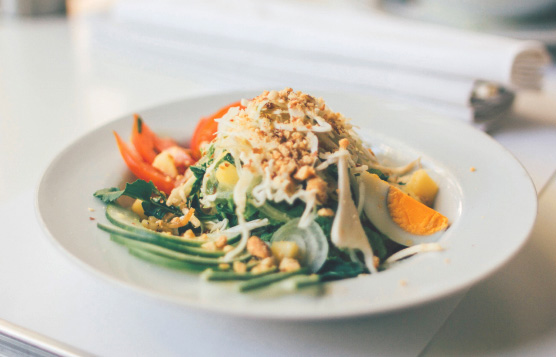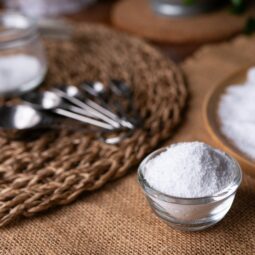
Sodium—the mineral that makes table salt salty—is a necessity of life. But too much extra sodium hiding in just about every processed food and restaurant meal is causing high blood pressure and other problems for millions of people.
What is a healthy limit for sodium? The top health organizations don’t agree; they recommend from 1,200 to 2,300 mg per day—about the amount in a half or full teaspoon of salt. We recommend asking your doctor what’s right for you, and following these six strategies to shake the excess sodium out of your diet. We also recommend the terrific salt-free recipes below.
1. Eat fewer processed foods
Most of the sodium in our diets comes from prepared, packaged and processed foods, not from the salt shaker. Some of the worst culprits are boxed rice and pasta dishes, frozen dinners and pizzas, cured meats (such as bacon and sausage), and canned soups and vegetables. Even foods that don’t taste salty, like bread and cereal, can be high in sodium, which is used in preservatives.
2. Use caution with condiments
Go easy on soy sauce, ketchup, bottled salad dressings, canned or jarred pasta sauces, seasoning packets, pickles and olives—these also tend to add a lot of sodium.
3. Read labels
Here are two tips to help you spot the lowest-sodium packaged foods:
- Choose products labeled as “low sodium,” “sodium free” or “no salt added.” Ignore “light” or “reduced” sodium claims—these products can still pack in a lot of sodium.
- Check the sodium content on the Nutrition Facts label. If the “% Daily Value” is more than 20% per serving, it’s high in sodium. If it’s less than 5%, it’s low.
4. Cook at home more often
Restaurants are another leading source of excess sodium in our diets. It’s easy to get several thousand milligrams of sodium in one restaurant or fast-food meal—even if you think you’re making a healthy choice. A garden salad with low-fat dressing often has more sodium than a burger and fries. Cooking at home gives you control.
5. Focus on fresh foods
Fresh fruits, vegetables, fish, poultry, eggs, milk and grains like wild rice and barley are all naturally low in sodium. For a lower-sodium life, make whole, fresh foods the focus of your shopping and home cooking.
6. Try new ways to boost flavor
Cutting back on sodium does not mean resigning yourself to a diet of bland and blah. Far from it. Relying less on salt can open up a whole new world of interesting flavors. Fresh herbs and garlic, zippy vinegars and citrus, and exotic seasonings await you.
Go salt-less with these full-flavor recipes
Source: allrecipes.com
There are all kinds of ways to boost flavor in your meals without adding salt. This vinaigrette recipe takes just minutes to whisk together and is great on salads and roasted vegetables. Try using flavored vinegars and adding fresh herbs for variety.
SALT-FREE VINAIGRETTE
• 1/3 cup olive oil
• 1/2 cup red wine vinegar
• 1 tsp lemon juice
• 2 cloves garlic, diced
• 1 Tbsp Italian seasoning (see below)
• 1/8 tsp white pepper
Mix up these seasoning blends and keep them on hand for chicken, pork, fish tacos—even potatoes or mushrooms. You’ll never miss the salt.
SALT-FREE ITALIAN SEASONING
• 2 Tbsp each: dried basil and dried marjoram
• 1 Tbsp each: garlic powder and dried oregano
• 2 tsp each: thyme, crushed dried rosemary and crushed red pepper
SALT-FREE MEXICAN SEASONING
• 1/4 cup chili powder
• 1 Tbsp each: ground cumin and onion powder
• 1 tsp each: dried oregano, garlic powder and ground red pepper
• 1/2 tsp cinnamon


